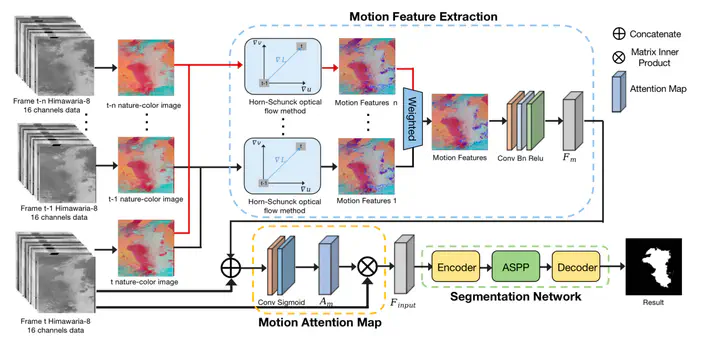MoANet: A Motion Attention Network for Sea Fog Detection in Time Series Meteorological Satellite Imagery

Abstract
Sea fog detection is a significant and challenging issue in meteorological satellite imagery. Distinguishing between sea fog and low clouds is challenging due to the similar morphology and brightness characteristics of these two phenomena on the imageries. Most of the existing deep learning methods are based on a single imagery feature extraction without the time-related features in imagery sequence. Although the designed temporal models, such as temporal U-Net, expand the available features from a single imagery to the consecutive frames and introduce general temporal information, the learned motion features are not explicit and can only be implicitly learned through a large amount of data. Thus, we introduce motion features obtained from continuous temporal imagery sequences into the sea fog detection task due to the discrepancy between sea fog and other types of clouds. In this article, under the motion features acquired by Horn–Schunck (HS) optical flow method and attention mechanisms, a Motion Attention Network (MoANet) for sea fog detection is proposed, named MoANet. We performed detailed experiments on the Himawaria-8 satellite imagery data set (H-8 Dataset). The Mean Intersection over Union (MIoU) of our method reaches 81.38%, which is 6.49% higher than the single imagery method. The visualization of the results shows that MoANet has more smooth edges, as well as detects more complete area than others. Furthermore, we validate on International Comprehensive Ocean-Atmosphere Data Set (ICOADS) through contrasting visibility value to prove the practicality of the proposed method and the accuracy achieves 90.65%.